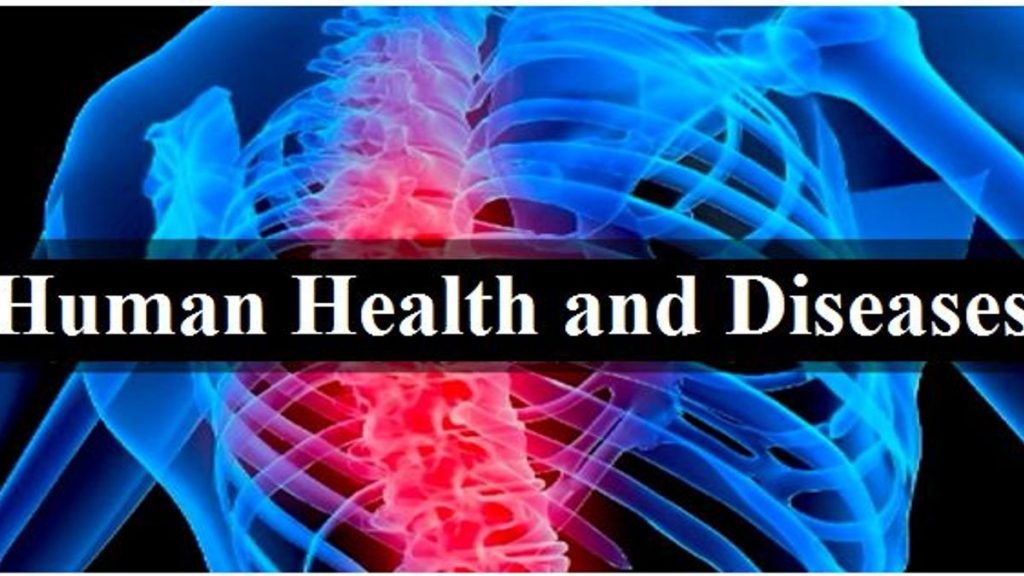History of Humans: Implications for Health and Disease

Why do some diseases never go away? Why does the body turn on itself at times? The answers to these questions and many others are connected to how our evolutionary past continues to play out in important ways in our lives today. In the same vein that physicians diagnose illness by recognising a set of symptoms that registers not just like, but as those of a certain diagnosis, evolutionary medicine researchers recognise homologous sets of symptoms that register as those of a certain disease. Once we segue from the metals-retrieval mechanism, we can then recognise that some features of steam pipes might have been evolved by natural selection because, in fact, steam pipes are a descendent of the metals-retrieval mechanism. Armed with this understanding of homology, the picture of evolutionary medicine becomes clear. Different diseases emerge at different evolutionary timescales: some as fresh adaptations and others as re-purposed traits. Evolutionary medicine seeks to understand the origins of diseases and the extent to which homology can influence health and disease, providing insights into potential trajectories for prevention and treatment. This essay explores those homologies that underlie our uniquely human version of rights and wrongs but also provide the modus operandi for our illnesses. It turns out that our distant past leaves us as survivors but leaves us vulnerable, too.
Evolutionary Mismatches and Modern Diseases
Evolution certainly worked wonders, granting us beautiful skin, optimising our growth during puberty, and other beneficial attributes. However, these evolution-approved processes, or traits, sometimes do not play so well in modern settings. When our environment changes and a physiological system is no longer well-adapted to a new aspect of the environment, we have what is commonly called an evolutionary mismatch. Sometimes, these mismatches are obvious; at other times it’s not so easy to see how a modern-day lifestyle or environmental aspect can go awry with key physiological or information-processing systems of the body. For instance, the evolutionary mismatch that contributes to obesity and its health complications – including diabetes and cardiovascular disease – occurs through the transition to the typical, modern food supply of a high caloric, low-nutrient diet. Evolution honed our physiology to store water, nutrients, and energy; back in the day, when food was scarce, these abilities yielded functional tradeoffs and were vital for human survival.
Sedentary lifestyles are another major mismatch: our ancestors were very physically active, walking many kilometres per day and with their jobs was far more physical than it is today. This sedentary behaviour underlies a whole host of disease: insulin resistance, which is a precursor to diabetes, underlies musculoskeletal problems as well as cardiovascular diseases and mental health disorders. It’s important to recognise these mismatches, because one of the key challenges we face is to try to infuse more physical activity in our lives because we’ve strayed so far from our evolutionary heritage.
The rapid evolution of technology has also outpaced our evolutionary adaptations, especially in terms of evoking mental health disorders. Our ancestors lived in small, highly interconnected social communities and today’s often socially isolated and digitally mediated communications can lead to higher rates of depression, anxiety, and other mental health disorders. Evolutionary mismatches due to our exposure to artificial light, especially from screens, can also impact our mental and physical health. Light exposure has its biological merits during daylight hours, often referred to as zeitgebers or ‘time givers’. Light growing stronger as dawn breaks signals the beginning of a new day through increasing adrenaline in the body, alerting us to the arrival of daylight. But what if that light was always on, all the time? Exposure to light at night also suppresses melatonin, which is produced by the pineal gland in the evening to promote sound sleep. So, what can we do with this new evolutionary understanding of the Western Pandemic of the 21st century? We can develop public health strategies to mitigate the impact of these evolutionary mismatches.
Infectious Diseases and Evolutionary Pressures
One way to think about infectious disease is that they pose powerful selective pressures, resulting in evolution of immune system adaptations that improve survival – such as the sickle cell trait, which provides resistance to malaria, for instance. Although it’s advantageous in populations with high malaria incidence, inheriting two copies of the gene results in sickle cell disease. Pathogens might have influenced the evolution of human biology, and vice versa. The history of our shared evolution reveals an ongoing human–pathogen arms race, fueled partly by our immune defences and partly by their attacks.
Agriculture and larger populations, which come with the formation of dense communities, accelerated the transmission of infection. Zoonotic diseases – such as those transmitted from animals to people – would increase. As humans herded and domesticated animals, they lived with them in greater numbers. The Black Death in Europe spread via the bacterium Yersinia pestis. Decimating populations has driven genetic changes in disease susceptibility, including the increased prevalence of some immune system alleles that persist and still impact us today.
These include vaccines and antibiotics (which significantly lowered mortality and changed selective pressures), but also the overuse of antibiotics (which, by generating antibiotic-resistant bacteria, presents new evolutionary challenges). The evolutionary history of our interactions with pathogens can help to inform approaches to combat antibiotic resistance, as well as by developing new treatments for patients. Still more research into evolutionary medicine is desperately needed so that scientists can prepare us for the next threat from infectious disease. This Essay is based on an excerpt from the Aeon book The Power of Evolution (2023), edited by William D Hamrick.
Genetic Adaptations and Health Outcomes
Genetic adaptations that were selected for historically through selection influenced by environmental factors can affect modern health outcomes. An example of this is the genetic variation known as lactase persistence, whereby some indiduials continue to produce the enzyme lactase to digest lactose (milk sugar) into adulthood. This is indicated by the combination of letters LP after an individual’s sequence. Dairy farming resulted in lactase persistence evolving in humans, as genomes carrying genes for this trait survived because dairy would serve as a key nutritional resource. In populations where milk was not present historically, these traits become rare and lactose intolerance is common. Overall, variation in adaptation indicates human diversity with respect to environmental and cultural practices.
There is also evidence of genetic adaptation with health consequences in skin pigmentation, such that populations closer to the equator evolved darker skin to provide an effective natural barrier against solar ultraviolet (UV) radiation, a known cause of skin cancer, as well as to prevent folate depletion. At higher latitudes, skin became lighter so that vitamin D could be synthesised more efficiently (because there is less UV radiation in high latitudes). These are excellent designs that solve problems in their own environment but can be disadvantageous the moment an organism finds itself in a different environment, known as accelerated risk. For example, dark-skinned individuals who emigrate to higher latitudes are at risk of having insufficient vitamin D.
The thrifty gene hypothesis proposes that some genetic traits are adaptive because they assisted in fattening up when food was scarce, thus allowing us to survive better. In societies with abundant food supplies these same traits can predispose to obesity and its associated metabolic disorders. Research on such genetic adaptations can be helpful in personalising medicine, in which tailored prevention or treatment are formulated for an individual’s genetic profile. Returning to the guinea pigs, we can now see how evolutionary medicine gives us insights into their metabolic variation.
Evolutionary Perspectives on Chronic Diseases
Evolutionary factors play a role in the development of chronic diseases such as heart disease, cancer and diabetes. For example, the evolutionary success of carrying extra calories as fat stores explains why heart disease, atherosclerosis and other cardiovascular diseaes are becoming so prevalent in modern cultures. If you can change your eating habits to decrease the amount of carbohydrates and fats, it can lower your risk of developing these diseases.
Another example of a chronic disease with an evolutionary history is cancer. The capacities for tissue growth and repair are essential to the body’s function, but they also contribute to cancer, raising the question: how do we balance growing and repairing new tissue without promoting growth of cancerous tissue? From this perspective, evolutionary medicine can be applied to the evolutionary compromises between cancer suppression and tissue repair that made us susceptible to cancer. As an example, the trade-off between cancer suppression and tissue growth is connected to the length of the human lifespan, which for most of our existence as a species was rather short. It was only recently – by any historical standards – that the human life span extended far enough into childhood to be at risk from cancer.
Even diabetes has an evolutionary story, for example, type 2 diabetes has a link with evolutionary history. the thrifty gene hypothesis proposes that during periods of intermittent fasting and feasting of our hunter-gatherer ancestor, genes that permitted fat storage in a thrifty fashion were an advantage. In a world where people experience some fasting and feasting, these genes make it more likely that we survive famines and thrive in feasts. This is perhaps the reason why some cultures like Greenlanders, traditional Inuits have a low prevalence of diabetes since they experience long periods of winter hibernation but in our modern society food is abundantly available throughout the year. These histories, when examined through an evolutionary lens, provide opportunities for improving treatments, diagnoses and perhaps even prevention. By examining our evolutionary responses, we can find ways to reason around the evolutionary predispositions we have inherited.
Mental Health and Evolutionary Pressures
Other mental health disorders such as depression and anxiety are no different. Traits that were beneficial for survival can often transform into maladaptive traits in new environments. Being highly vigilant and anxious would be quite beneficial if you were running away from predators. However, in the relative safety of modern times, the same traits can make you chronically stressed, easily anxious and prone to anxiety disorders. Once again, trying to understand these ancestral roots can help us develop interventions that tackle the root of the problem when treating mental health issues.
Social structures and the evolution of human cooperation have ramifications for mental health. Early humans lived in small kin-based groupings consisting of familial connections and close friends. Living in these close-knit social groups meant that mental and physical activities were typically carried out alongside other members. The modern world is often marked by spatial and social displacements that promote isolation and can in turn cause depression. The dissonance between our extant social needs as evolved species and contemporary social arrangements indicates the need for strong communities and social networks to promote mental wellbeing. Evolutionary understandings can inform practises and policies that attempt to strengthen social cohesion and support mental health.
Evolutionary approaches also highlight the mechanisms behind the high prevalence of certain types of personality and their links with mental health. Traits such as novelty seeking, impulsiveness and aggression served adaptive functions in ancestral environments but can now lead to problematic behaviour and mental health issues. For example, those higher in impulsivity and risk-taking might be more prone to substance abuse and addiction. Understanding the mechanisms that generate these dysfunctional tendencies in an evolutionary context can provide crucial information for psychiatrists about the underlying causes of mental health disorders, which in turn can inform targeted ways of intervening.
Implications for Modern Medicine and Public Health
Applying evolutionary perspectives will change your perspective on your health and illness This why evolutionary medicine can, and will, generate better ways to deal with health and disease. It offers a frame for identifying the causes of disease, not just the perception of symptoms. By providing a model for physicians and disease-prevention specialists to recognise how mismatches in evolution produce health problems, evolutionary medicine can make for better prevention and treatment than more superficial approaches that just deal with the symptoms. (For instance, public health campaigns that encourage people to eat less factory-farmed fast food and get more exercise can offset aspects of our lives that are a far cry from anything our evolutionary past has ever prepared us for.)
And evolutionary medicine might help achieve these with personalised medicine. If medicine and medical care are optimised based on both an individual’s genetic uniqueness and their evolutionary history, clinicians will have tools to better and more precisely manage chronic diseases and mental health disorders – precisely because of the large genetic and environmental forces at work for the Netherlands, Ibiza, or Patagonia we all call home.
Evolutionary insights can also benefit public health policy. A knowledge of the evolutionary origins of disease informs interventions that target the underlying causes of health problems. Making environments conducive to physical activity and social interaction can help to mitigate the detrimental aspects of modern lifestyles. And the evolution of antibiotic resistance in pathogens has guided policies aiming to reduce antibiotic use and treatment. Evolutionary approaches might lead a more proactive approach to public health.
Conclusion
Our evolutionary past shapes our health and likelihood to develop disease in important ways. Appreciating our evolutionary mismatches, the variations in our genes that produce adaptive traits, and our interactions with pathogens and immune systems brings the basic causes of muchadverse health more clearly into focus. This, in turn, results in more effective prevention, treatment and public health approaches that conform more to our evolutionary legacy. As we gain a better understanding of the implications of our past for current health and disease challenges, we can better manage to stay healthy in the modern world.








